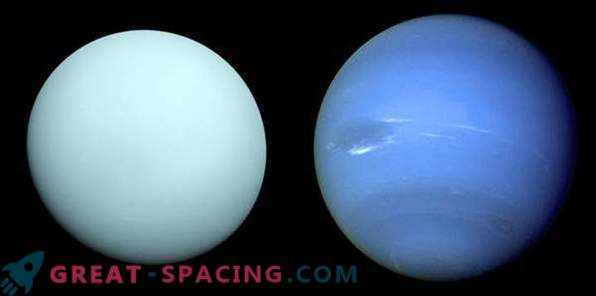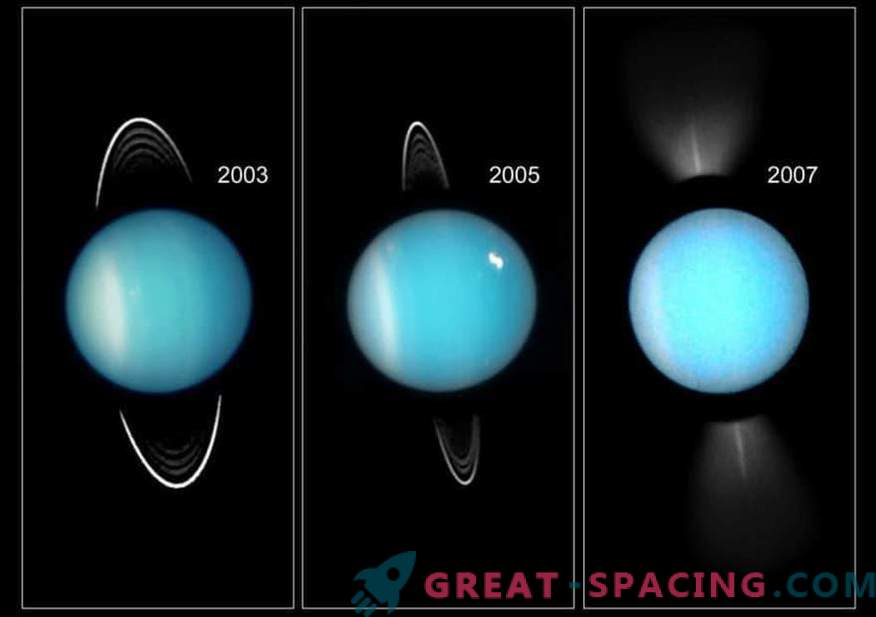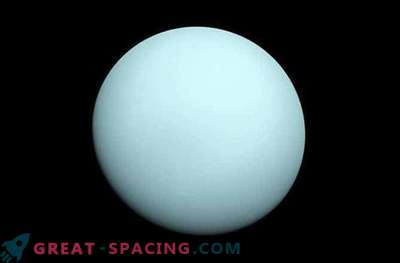
8 official planets reside on the territory of the Solar System. The farther we move from the Sun, the colder it becomes. Then it would be fair to assume that it is the eighth planet (Neptune) that should be the leader in frost. But this honor went to Uranus! How did that happen?
Something about Uranus
The planet is in seventh place in distance from the Sun, with an average distance of 2.8 billion km. In addition, it ranks third in diameter and fourth in massiveness. Interestingly, this is the first planet that was found using a telescope.
Uranus is the happy owner of 13 rings and 27 satellites. It belongs to the category of ice giants, as the composition is represented by water, ammonia, methane, hydrogen sulfide and rocky rocks. This is an interesting world, but how did he manage to become the coldest?
The rivalry of Uranus and Neptune

Comparative sizes of Uranus and Neptune
Until 2006 there were no questions about the coldest planet, because it was considered Pluto. But by the decision of the MAC, we have a dwarf planet, so it seemed that the title “the most frosty world” should go to Neptune (8th planet). Neptune lives almost twice as far from the Sun - 4.55 billion km. In atmospheric layers, the temperature drops to -220 ° C, and the average is kept at -200 ° C. The mean temperature mark of Uranus shows -195 ° C, which is inferior to Neptune. But the bottom line is that Uranus has the lowest index to -224 ° C, which means that the planet becomes the coldest in certain time periods, and this has earned the primacy.
Theories and guesses

Uranus Captured by the Hubble Space Telescope
Researchers have been trying for a long time to understand why the planet exhibits such low temperatures. Arguments like distances from the Sun do not resemble, for Neptune is located further. In addition, the angle of inclination should contribute to obtaining more heat.
Some believe that this world just does not create internal heat. In reality, for giant planets, it is considered a normal state to give out more heat than they receive from a native star. If the core temperature of Jupiter reaches 30000 K, then Uranus has only 5000 K. You should also not forget about the strange rotation of the planet. In fact, this is the only world in the Solar System, which practically lies on its side. Most likely, in the past there was a strong blow with a large object. This event not only brought down Uranus, but knocked down the internal heating mechanism.
There is another interesting hypothesis. Scientists assume that in the atmospheric layer (at the top level) a certain layer is capable of hiding, which simply prevents movement heat from the core to the top . What could it be? For example, it is enough that the contacting layers differ sharply in composition. Then it complicates the process of convective heat transfer.
Postscript
Due to the lack of thermal radiation (excess), researchers are not able to accurately determine the temperature indicators in the depths of this world. Perhaps, inside it would be possible to find water and even the conditions for the existence of life. But so far we have very little information.











































